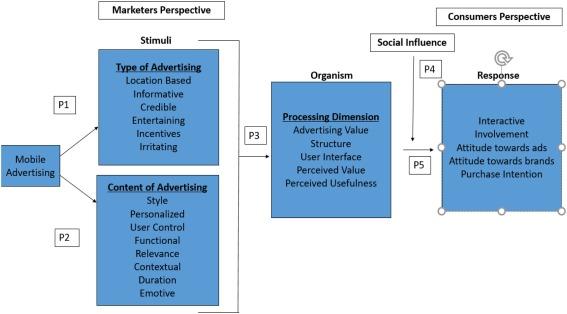unlocking Results: How to Measure the impact of Bite-Sized Learning
Bite-sized learning has revolutionized how organizations approach training and development. With shorter, focused lesson modules, employees can more easily absorb new facts and apply it on the job. But while this microlearning trend is proven to boost engagement and retention, many L&D professionals still grapple with a critical question: How do we measure the actual impact of bite-sized learning?
In this comprehensive guide, we’ll unpack the methods, metrics, and proven techniques to unlock meaningful results with bite-sized learning strategies. Whether you’re an eLearning strategist,HR professional,or business leader seeking ROI from your digital training initiatives,you’ll find actionable insights to optimize your approach.
What is Bite-Sized Learning?
Bite-sized learning, also known as microlearning, refers to instructional content delivered in small, easily digestible segments—typically 2-10 minutes long. This method leverages brevity and focus, enabling learners to engage with information in short bursts that fit seamlessly into their daily routines.
- Common formats: videos, quizzes, interactive scenarios, flashcards
- Platforms: Learning Management Systems (LMS), mobile apps, intranet portals
- Focus: Address specific skills or topics, frequently enough “just-in-time” for immediate application
why Measuring the impact of Bite-Sized Learning Matters
Organizations invest substantial resources in developing microlearning content.But to justify ongoing costs,boost employee performance,and foster a culture of continuous learning,its crucial to evaluate learning effectiveness and business impact.
Effective measurement helps you:
- Demonstrate ROI to stakeholders and leadership
- Identify skill gaps and optimize content
- Increase learner engagement with relevant materials
- Drive continuous improvement through actionable insights
Key Metrics to Evaluate Bite-Sized Learning Impact
Measuring microlearning goes beyond simple completion rates. consider these essential KPIs (Key Performance Indicators):
1. Completion and Engagement Rates
- Module completion: Track which lessons are finished and which are abandoned
- Time spent: Monitor how long learners engage with each module
- Repeat visits: Assess if learners revisit modules for reinforcement
2. Knowlege Retention
- Pre- and post-assessment scores: Compare learner performance before and after learning sessions
- Quizzes & interactive exercises: Use ongoing assessments to gauge retention over time
3.Behavior Change & Application
- On-the-job performance: Look for improvements in workplace tasks tied to learning objectives
- Manager feedback: Collect qualitative insights from supervisors on observed changes
4. Learning Satisfaction & Adoption
- user surveys: Measure learner confidence, satisfaction, and perceived value
- Adoption rates: Track voluntary enrollment in new microlearning modules
5. Business Outcomes
- Productivity metrics: Time to competency, error reduction, sales performance
- Organizational impact: Reduced turnover, increased compliance, improved customer satisfaction
Best Practices for Measuring Bite-Sized Learning
Follow these expert tips for a holistic approach to impact evaluation:
- Align learning objectives with business goals: Begin every program by identifying measurable business outcomes.
- Integrate assessments seamlessly: Embed short quizzes and interactive tasks within content for instant feedback.
- Leverage data analytics tools: Use your LMS or mobile platform to track real-time learner progress and engagement.
- Collect feedback regularly: Run pulse surveys and focus groups to capture learner sentiment and suggestions.
- Compare pre- and post-intervention results: Use baseline data to measure skill improvements over time.
WordPress Tip: Style your KPI findings or survey results in visually appealing tables or infographics using block editors like Elementor or Gutenberg for a more engaging user experience.
Case Study: Real-World Impact of microlearning
Let’s explore how a global retail company implemented bite-sized learning modules and measured their impact:
- Goal: Improve product knowledge among sales associates
- Method: Weekly 5-minute video lessons paired with rapid quizzes
- Measurement:
- Completion rate increased from 60% to 88% in 4 months
- Average quiz scores improved by 25%
- Sales per associate increased by 15% in pilot stores
- Manager surveys reported higher confidence and product expertise
Key takeaway: Consistently measuring microlearning impacts at both learner and business levels enables informed decisions about future investments and strategy pivots.
Benefits of Bite-Sized Learning for Organizations
Unlocking results with bite-sized learning isn’t just about improved metrics—it’s about transforming your organizational culture and agility. here’s why companies love microlearning:
- Greater flexibility: Employees learn when it suits them, reducing disruption
- Faster skill acquisition: Short modules deliver immediate, actionable knowledge
- Cost-effective: Lower development and delivery costs compared to traditional courses
- Higher engagement: Interactive, concise content keeps learners motivated
- Easier personalization: Curate learning paths based on job role or performance needs
Practical Tips to Maximize Your Microlearning Impact
- Set clear metrics: Decide which KPIs you’ll track before launching your program
- Automate reporting: Use your LMS’s dashboard and reporting features for efficient data collection
- Encourage feedback: Ask learners for direct input and use it to inform future content
- Link learning to performance reviews: integrate microlearning achievements into employee appraisal systems
- Iterate! Regularly review your data and adapt your modules for continual improvement
Example: Measuring a Bite-Sized Learning Initiative with WordPress LMS
If you’re using a WordPress-based LMS plugin like LearnDash or LifterLMS, consider leveraging features such as:
- Progress tracking: Visual dashboards to monitor learner journeys
- quiz analytics: In-depth reporting on knowledge checks and retention scores
- Engagement triggers: Automated email nudges based on behavior
- User feedback forms: Simple surveys integrated directly into training modules
Conclusion: Driving Continuous Improvement with Measurable Results
Bite-sized learning is more than a hot trend—it’s a transformative strategy for agile workplaces. However, its true value lies in the ability to measure, analyze, and act on its impact.By establishing clear KPIs, leveraging modern analytics, and fostering a feedback-rich culture, your organization can unlock impressive results, boost ROI, and keep your workforce continually growing.
Ready to optimize your microlearning journey? Start today by integrating robust measurement methods,celebrating successes,and refining your approach to maximize results from every bite-sized lesson!
Join the Conversation: How do you measure the effectiveness of bite-sized learning in your organization? Share your success stories,tips,or challenges below!

